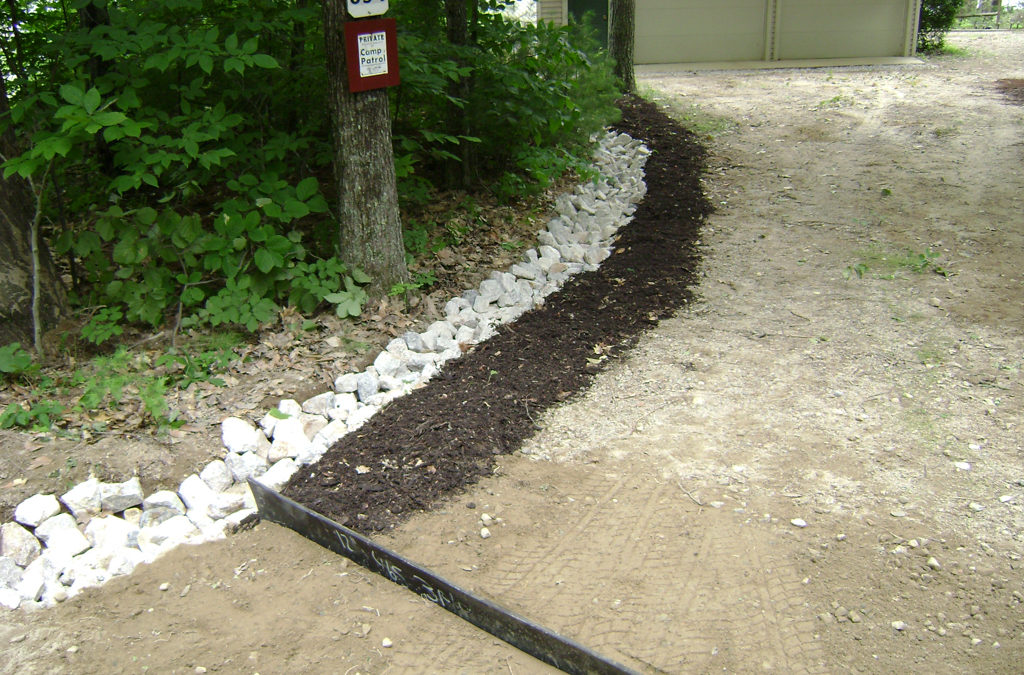Infiltration Trench
Managing runoff from rooftops and paved areas.
Purpose: Infiltration trenches collect and infiltrate runoff from paved driveways, rooftops and other areas. Infiltration trenches work best in well-drained soils like sands and gravels. Due to their relatively small size, they can effectively handle only smaller rainfall events. Infiltration trenches are not well suited for areas that receive large amounts of sediment (e.g., gravel driveways) as they will fill in quickly.
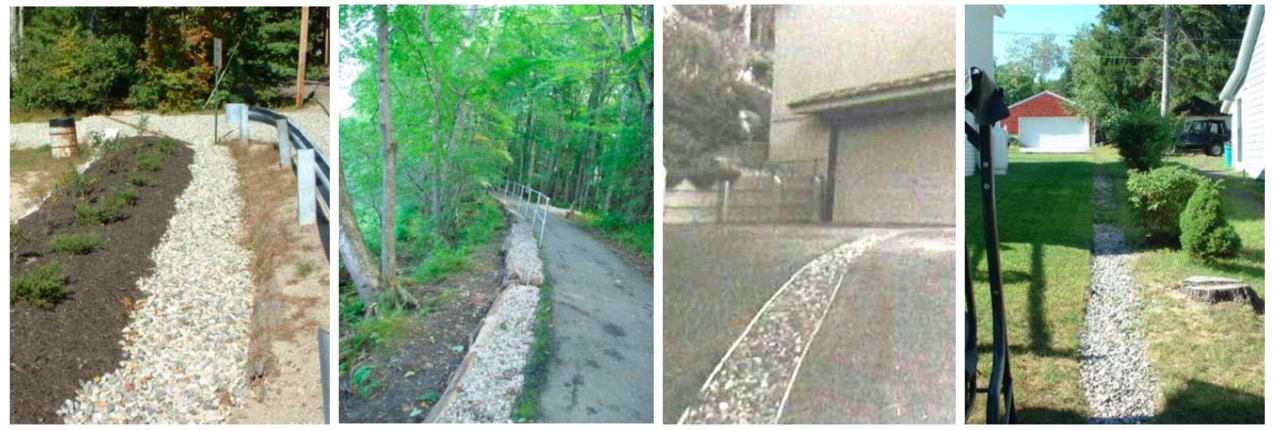
Installation: Dig a trench that is 18” wide and at least 8” deep. Make sure to dispose of the soil in a flat area where it cannot be washed into the lake. The front and sides of the trench may be edged with stone or lumber to hold the stones in place.
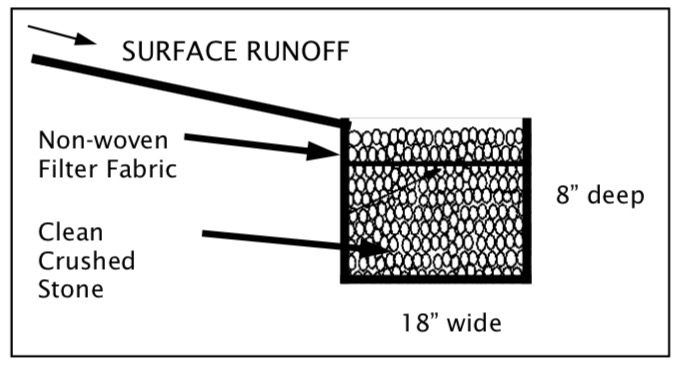
Extend the life of the infiltration trench by lining the sides with non-woven geotextile fabric. Fill to within 3” of the ground level with 1⁄2” to 11⁄2” crushed stone. Fold a flap of non-woven geotextile fabric over the top of the trench and top off with additional stone.
Note- This is one of the most common BMPs the AWWA Youth Conservation Corps installs!
Materials: Crushed stone can be purchased at your local gravel pit. Contact your local Soil and Water Conservation District for suppliers of non-woven geotextile fabric. Other geotextiles, including landscaping weed barrier, can be substituted for smaller projects.
Maintenance: To maintain these structures, periodically remove accumulated debris and weeds from the surface. Non-woven geotextile fabric will extend the life of these structures, however, they will eventually clog over time and the stone will need to be removed and washed to clean out the accumulated sediment and debris.
Tip: Infiltration trenches can be added in conjunction with other BMPs. For example, these trenches can catch runoff coming from rubber razors and waterbars.
Examples
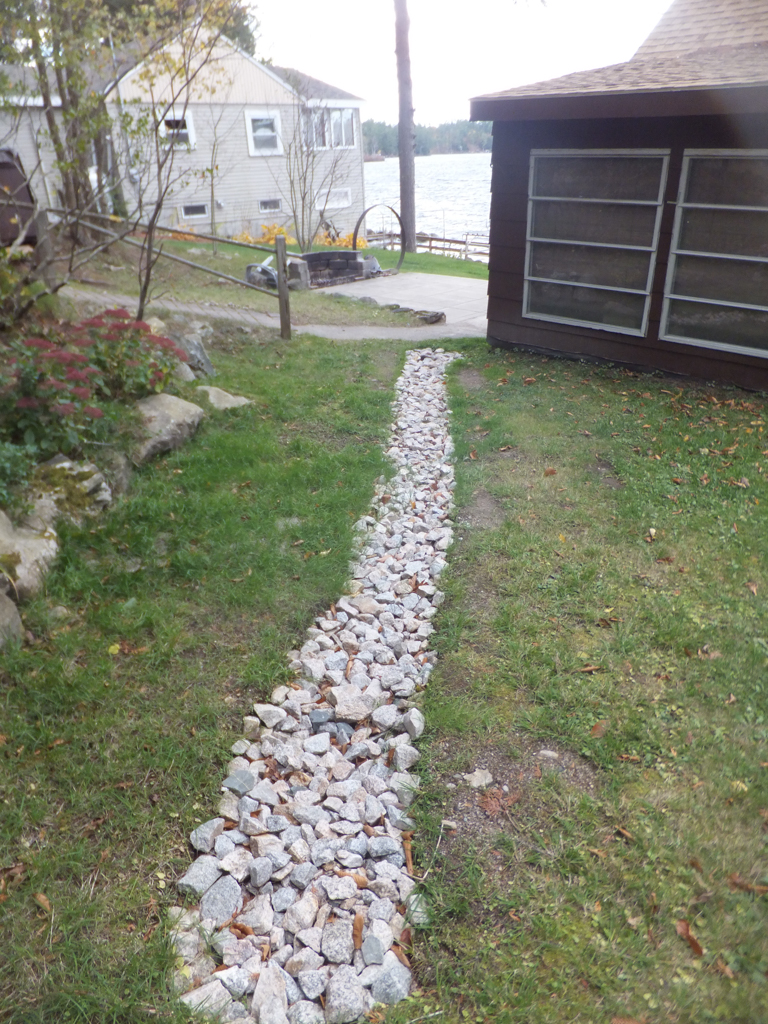
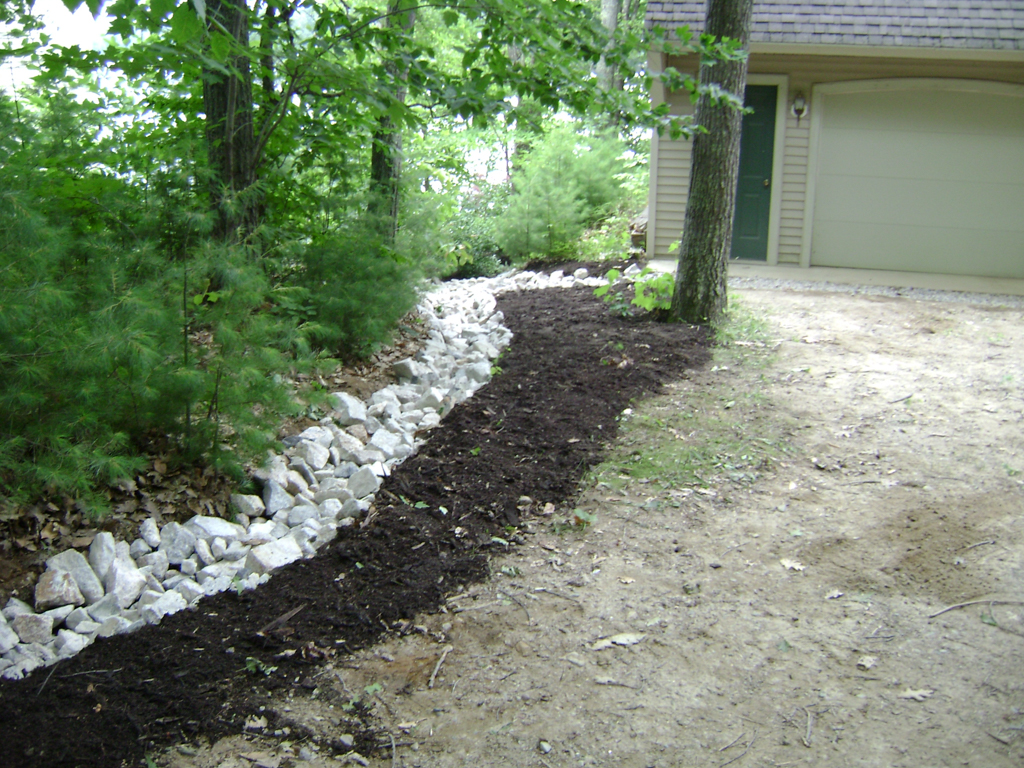
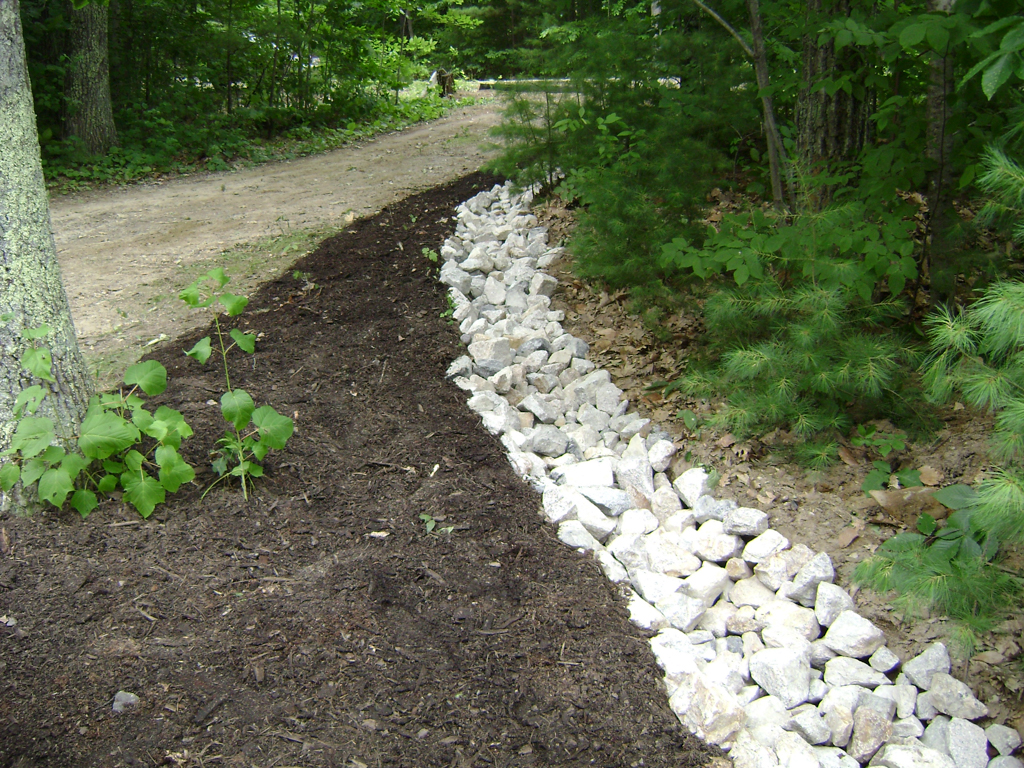
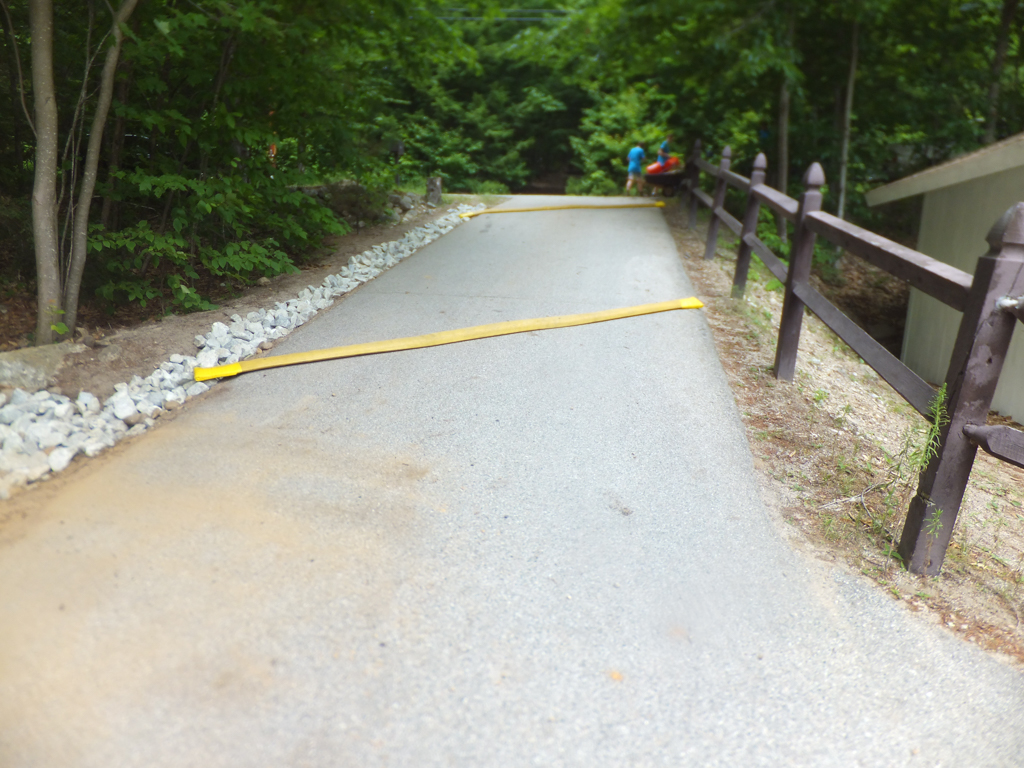
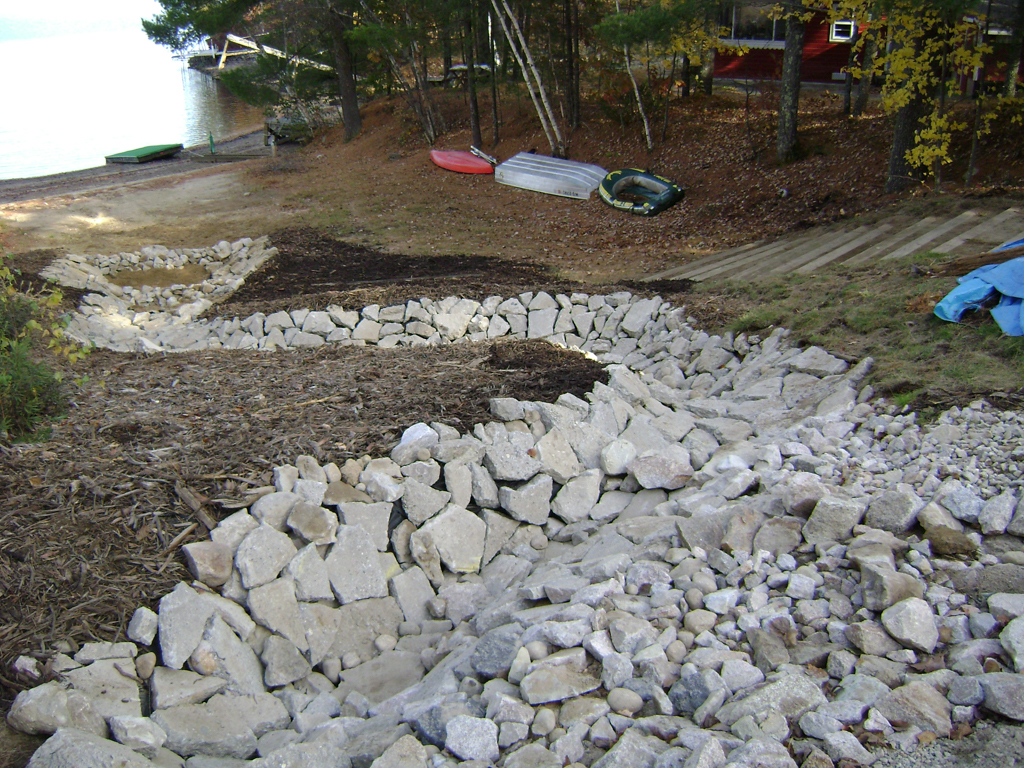
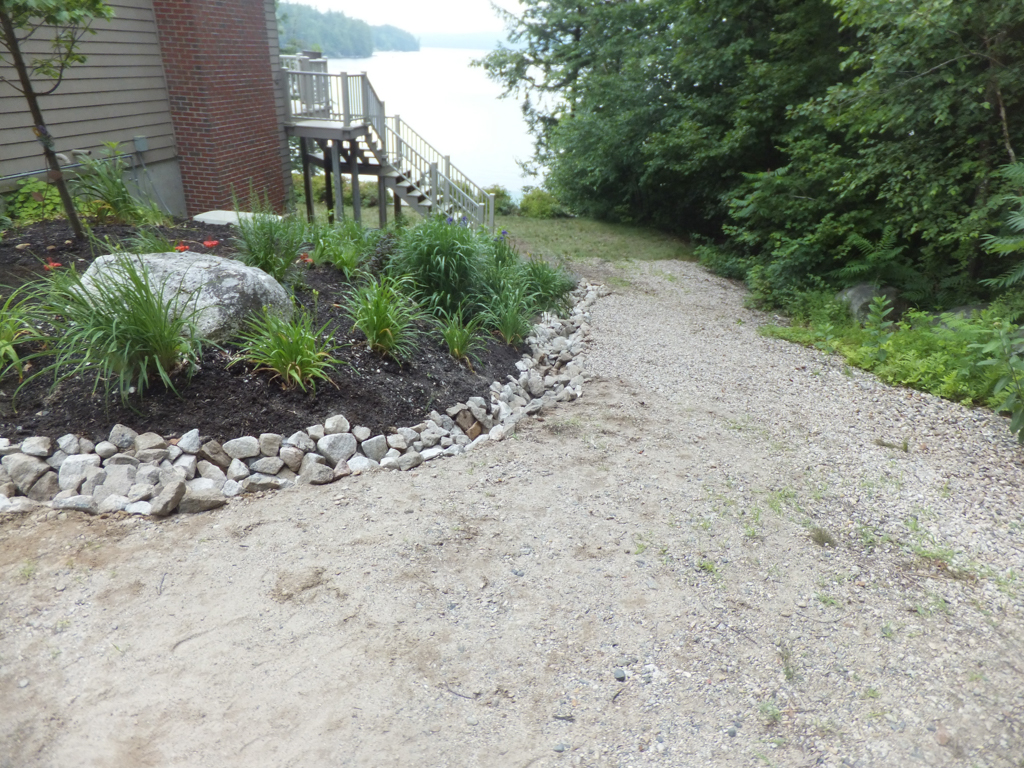
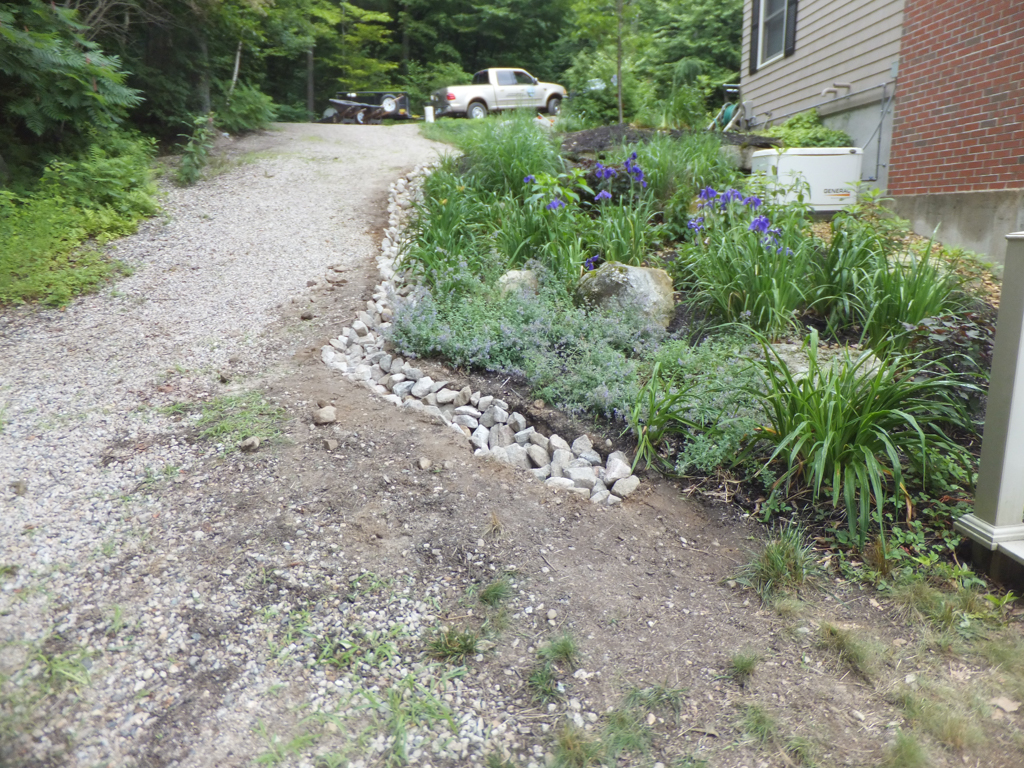
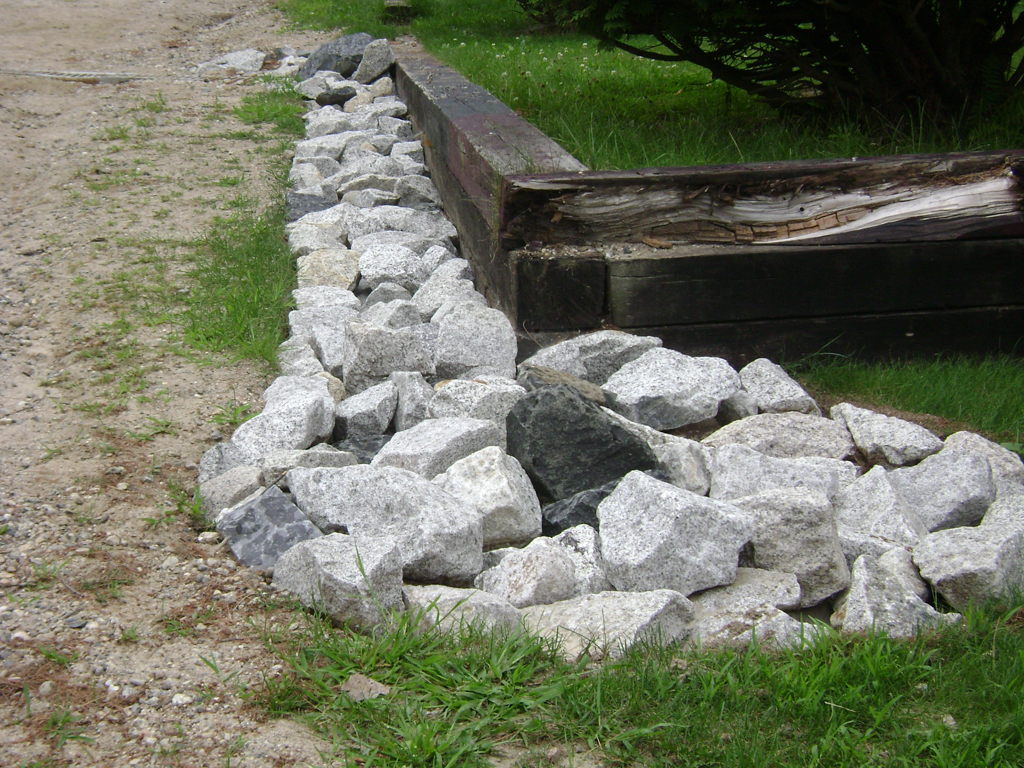
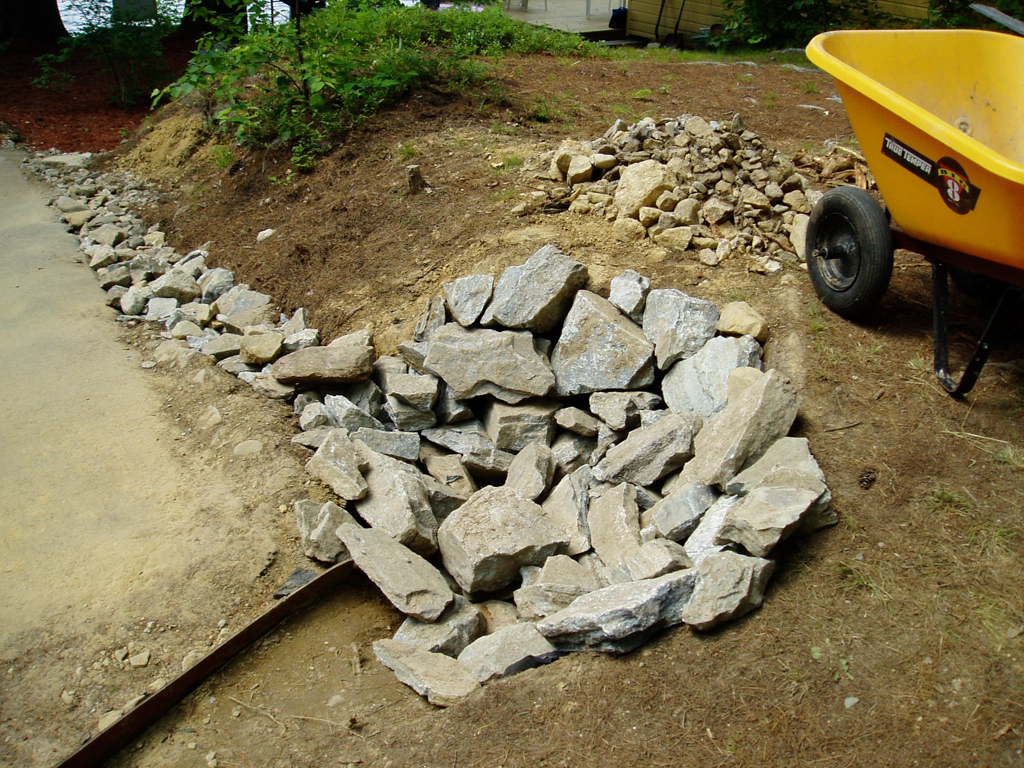
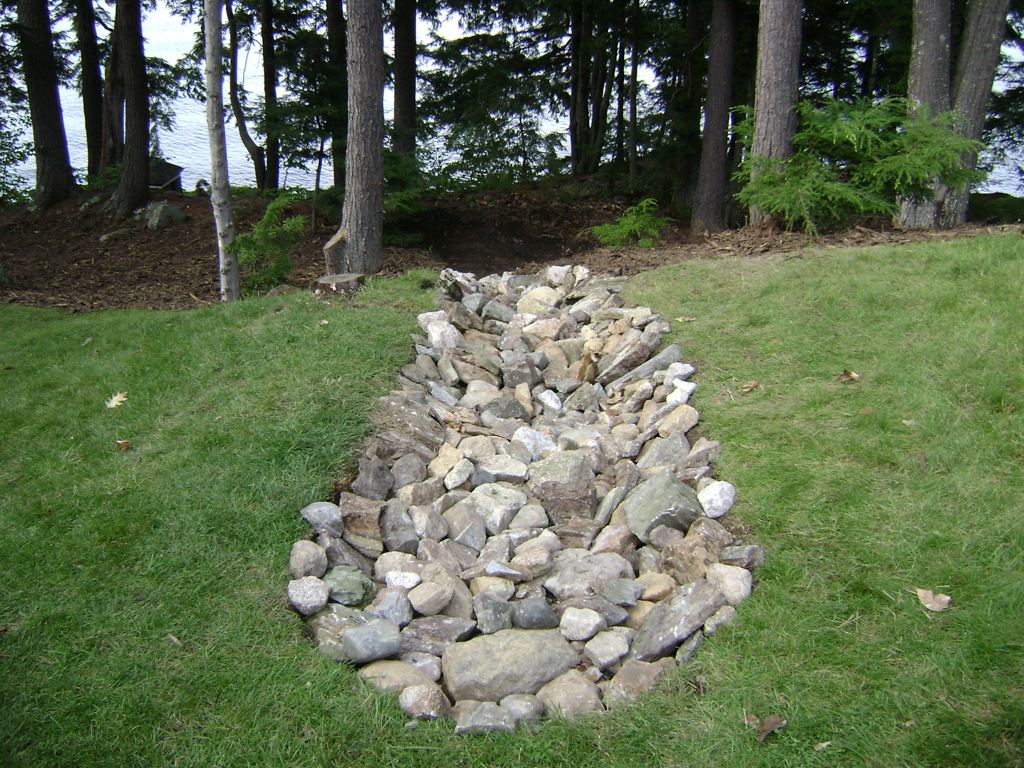
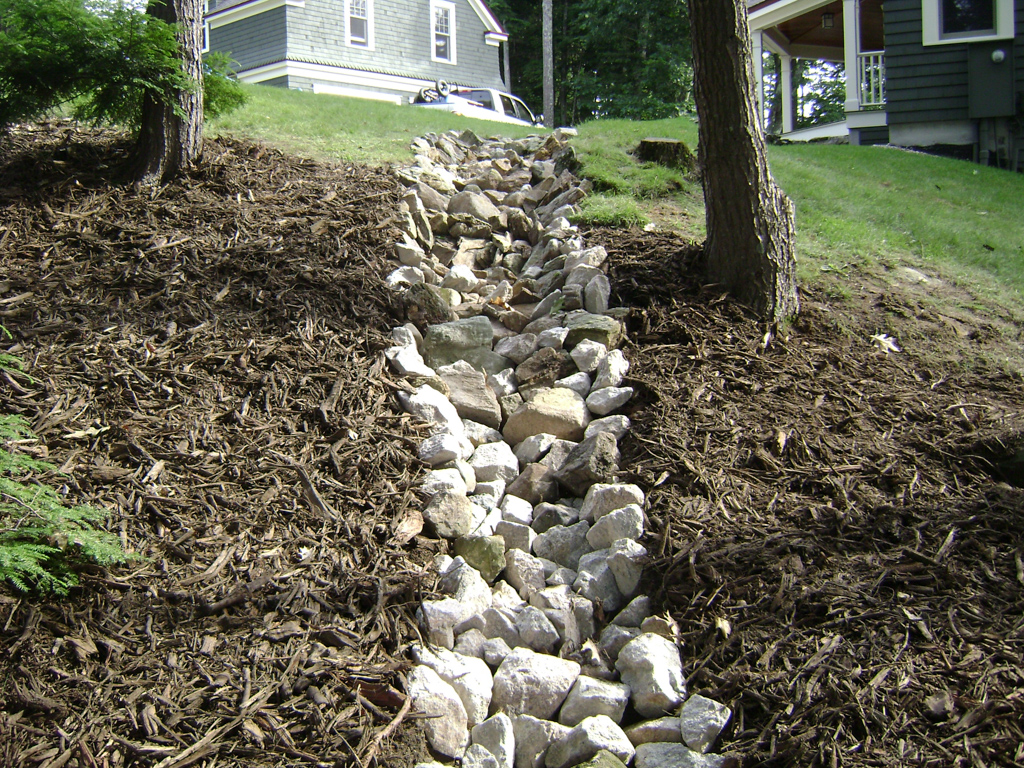
The Conservation Practices for Homeowners Factsheet Series are available at: Maine DEP or the Portland Water District. You can also find fact sheets at SOAK up the Rain NH.

